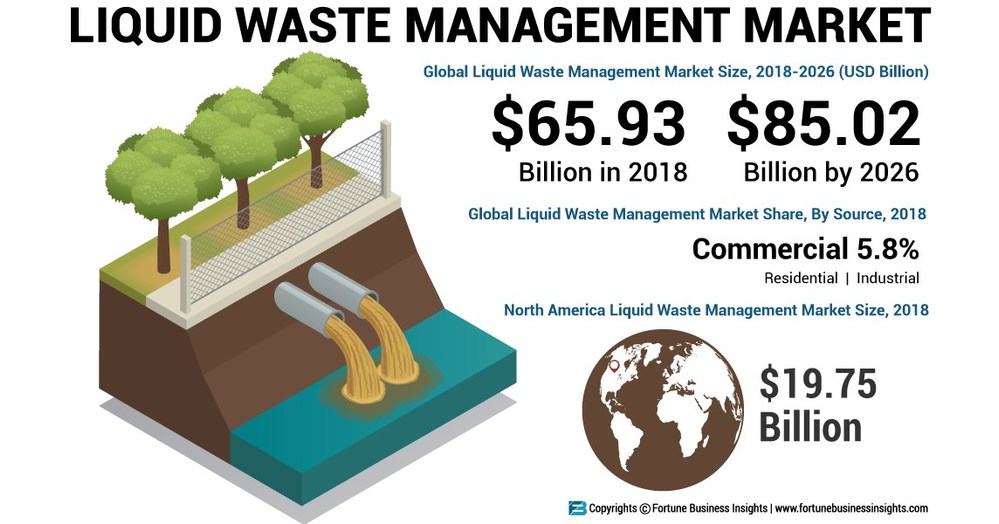Reclaim Waste Fundamentals Explained
Reclaim Waste Fundamentals Explained
Blog Article
Reclaim Waste Things To Know Before You Buy
Table of ContentsReclaim Waste - The FactsMore About Reclaim WasteThe 15-Second Trick For Reclaim WasteReclaim Waste Things To Know Before You Get This9 Easy Facts About Reclaim Waste Described
Domestic sewage waste refers to the waste and products from a residential septic storage tank. The correct administration and disposal of domestic sewage waste require fluid waste to be transferred to a sewer therapy plant where the correct approaches and equipment are used to purify and dispose of waste.
Industrial waste usually consists of prospective hazards, such as flammable materials or a blend of fluid and solid waste items, and requires a more advanced and detailed disposal procedure. The disposal of commercial waste usually includes the filtration of waste prior to transportation to guarantee safe and appropriate disposal. Hazardous waste is created from results and runoff of industrial processes and production.
This kind of waste can not utilize the same sewage monitoring transportation or procedures as septic or commercial fluids. The industrial waste administration process calls for the examination and screening of fluid waste prior to it goes through the disposal procedure (liquid waste disposal melbourne). Overflow waste is the fluid waste that originates from runoff and excess stormwater in highly booming locations or cities
Runoff waste can trigger contamination and flooding if not handled appropriately. Find out more regarding sewage system cleansing and waste management. Ensuring appropriate waste administration can prevent disasters and decrease ecological damage. Both individuals in residential settings and specialists in industrial or manufacturing industries can take advantage of recognizing the procedures and policies of fluid waste monitoring.
Not known Facts About Reclaim Waste
Get in touch with PROS Services today to find out about our waste management and disposal services and the appropriate means to look after the liquid waste you generate.
(https://padlet.com/leonaube33101/reclaim-waste-hw71hge954tsaxnp)Do you understand what occurs to your water when you draw the plug, flush the commode or drain pipes the cleaning maker? No? Well, it's worth recognizing. This so-called 'wastewater' is not only an essential resource but, after treatment, will certainly be launched to our land, waterways or the ocean. Made use of water from toilets, showers, baths, kitchen area sinks, laundries and commercial processes is referred to as wastewater.

water made use of to cool down equipment or clean plant and devices). Stormwater, a kind of wastewater, is runoff that streams from farming and urban locations such as roofs, parks, gardens, roads, paths and gutters visit here right into stormwater drains pipes, after rain. Stormwater flows untreated directly to regional creeks or rivers, eventually getting to the sea.
The 30-Second Trick For Reclaim Waste
In Queensland, most wastewater is dealt with at sewage therapy plants. Wastewater is transferred from domestic or commercial sites with a system of sewage systems and pump stations, referred to as sewerage reticulation, to a sewage therapy plant. City governments develop, preserve and operate most sewage therapy plants. Operators are certified under the Environmental Security Act 1994 to release treated wastewater at an appropriate environmental criterion right into rivers.
The Division of Natural Resources encourages city governments about handling, operating and preserving sewage systems and therapy plants. In unsewered locations, regional federal governments may need homeowners to set up individual or household sewage treatment systems to deal with domestic wastewater from bathrooms, kitchens, bathrooms and laundries. The Department of Natural Resources authorises making use of household systems when they are verified to be reliable.
The majority of stormwater obtains no treatment. In some brand-new subdivisions, therapy of some stormwater to get rid of litter, sand and crushed rock has started making use of gross pollutant traps. Wastewater treatment takes place in four phases: Eliminates strong matter. Bigger solids, such as plastics and other things mistakenly discharged to sewers, are eliminated when wastewater is passed with screens.
Wastewater then streams right into huge storage tanks where solids settle and are removed as sludge. Grease and residue are skimmed from the surface area. Makes use of little living microorganisms referred to as micro-organisms to damage down and get rid of staying dissolved wastes and great particles. Micro-organisms and wastes are included in the sludge. Removes nitrogen and phosphorus nutrients that could trigger algal blooms in our rivers and threaten marine life.
Some Known Incorrect Statements About Reclaim Waste
Nutrient removal is not offered at all sewage therapy plants because it requires costly specialist tools. Clear fluid effluent generated after therapy may still contain disease-causing micro-organisms - liquid waste disposal.

Many wastewater flows right into the sewerage system. Under the Act, regional federal governments provide approvals and permits for eco pertinent activities (Ages) including wastewater launches that may have a regional impact.
Reclaim Waste Fundamentals Explained
Surveillance gives accurate information regarding water high quality and can verify that licence conditions are being fulfilled. The information gotten through monitoring provides the basis for making water quality choices.
Report this page